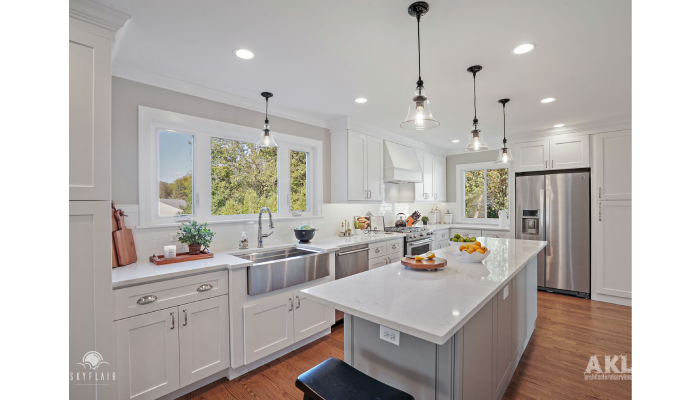Architectural animation serves as a powerful tool for visualizing architectural designs through 3D techniques. It immerses clients and stakeholders in projects, enhancing their understanding and engagement before construction begins. Utilizing advanced technologies like 3D modeling software, animation programs, and VR/AR experiences allows architects to present complex spatial relationships more effectively. Trends indicate a growing preference for realistic animations and interactive elements that let clients explore design options freely. Expert services not only ensure high-quality presentations but also save time and costs compared to in-house efforts. Reviewing portfolios and client feedback is essential when selecting an architectural animation service to achieve the best results.
1. What is Architectural Animation?
Architectural animation is a powerful tool that uses 3D animations to bring architectural designs to life. It allows clients and stakeholders to see a project in a dynamic way, long before the first brick is laid. By simulating the finished product, architectural animation helps to enhance understanding and engagement, making complex designs more accessible.
These architectural animation services are crucial for visualizing spatial relationships and design intentions. For instance, when a developer presents a new urban project, an animation can show how the buildings fit into their environment, providing context that static images simply cannot convey.
In today’s fast-paced market, effective communication between architects, clients, and investors is vital. Architectural animation fosters this by creating a shared vision that everyone can understand, promoting informed decision-making throughout the project lifecycle.
2. How Immersive Presentations Work?
Immersive presentations leverage cutting-edge technology to transform architectural designs into engaging visual experiences. Using 3D animations, these presentations allow clients and stakeholders to explore projects in a way that traditional blueprints cannot achieve. By experiencing a space before it is built, viewers can better understand the layout, proportions, and overall design intent.
The process begins with detailed 3D modeling, where software like AutoCAD or Revit creates an accurate representation of the architectural concept. Once the model is established, animation software such as Blender or 3ds Max brings the design to life, adding movement and environmental elements that simulate real-world conditions.
Incorporating Virtual Reality (VR) and Augmented Reality (AR) enhances this experience even further. With VR, users can don headsets and walk through the virtual space, offering a first-person perspective that deepens their connection to the project. AR, on the other hand, overlays digital models onto real-world environments, allowing clients to visualize how a new structure fits into its surroundings in real time.
3. Technologies Behind Architectural Animation
Architectural animation relies on a mix of advanced technologies to bring designs to life. At its core, 3D modeling software like AutoCAD, SketchUp, and Revit helps architects craft detailed and accurate models. These tools allow for the manipulation of dimensions and materials, ensuring that every aspect of the design is represented accurately.
To create fluid and realistic animations, specialized animation software such as Blender, 3ds Max, and Cinema 4D is employed. These programs are designed for rendering high-quality visuals that capture light, texture, and movement, making the animation feel as though it could exist in the real world.
In recent years, Virtual Reality (VR) has transformed how clients interact with architectural designs. With VR, clients can step into a virtual space and explore it as if it were built. This immersive experience can significantly enhance understanding of spatial relationships and design intent. Similarly, Augmented Reality (AR) has gained traction, allowing users to overlay digital models onto real-world environments. This is particularly useful for on-site presentations, giving clients insight into how a project will integrate with its surroundings.
As technologies evolve, the demand for high-quality, hyper-realistic renderings has surged. Clients now expect animations that not only depict the design accurately but also reflect real-world lighting and materials. Additionally, interactive presentations are becoming more common, enabling clients to tweak designs and see changes in real time, making the entire experience more engaging. With these technologies, architectural animation continues to push the boundaries of how projects are presented, creating a bridge between concept and reality.
4. Latest Trends in Architectural Animation
Architectural animation is rapidly evolving, with several key trends shaping the industry. One prominent trend is the demand for realistic renderings. Clients expect animations that closely resemble real-world conditions, incorporating accurate lighting and textures to create lifelike presentations. This attention to detail enhances the viewer’s connection to the project.
Another significant trend is the rise of interactive presentations. Clients enjoy being able to explore different design options and make adjustments in real-time. This interactivity not only engages clients more but also allows for a collaborative design process, ensuring that their preferences are considered from the outset.
Sustainability is also becoming a focal point in architectural animations. Presenters are increasingly incorporating visualizations that demonstrate energy efficiency and the environmental impact of designs. By showcasing sustainable features, architects can appeal to eco-conscious clients and stakeholders.
5. Advantages of Expert Animation Services
Expert architectural animation services offer several significant advantages that can enhance project presentations. One of the key benefits is enhanced visualization. High-quality animations help clients and stakeholders better understand design concepts, making it easier to grasp complex spatial relationships and design intents. This clarity can lead to more informed decision-making and smoother communication among architects, clients, and investors.
Time and cost efficiency is another major advantage. Professional animators with specialized skills can produce results more quickly and affordably compared to in-house teams that may lack the necessary expertise. This can be particularly beneficial for firms looking to meet tight deadlines or manage project budgets effectively.
Moreover, utilizing expert animation services provides a competitive edge. Companies that invest in these high-quality animations often stand out in bids and presentations, increasing their chances of winning projects. For example, major urban developments and commercial projects often leverage architectural animations to captivate potential investors and stakeholders, showcasing their vision in a compelling way. All of these factors combined contribute to the growing importance of expert architectural animation services in today’s architecture and design landscape.
6. Successful Uses in Architecture
Architectural animation has found successful applications across various sectors, significantly enhancing project presentations. In commercial projects, major urban developments and skyscrapers have leveraged these animations to attract investors and stakeholders. For instance, a real estate firm might use a stunning animation of a new office complex, showcasing the design, surroundings, and how the building integrates with the urban landscape. This not only helps in marketing but also in securing necessary approvals from city planners.
In residential developments, home builders often utilize architectural animations to showcase new neighborhoods. Potential buyers can take virtual tours of homes, experiencing layouts, interiors, and outdoor spaces as if they were physically there. This immersive experience allows them to visualize their future living environment, making it easier for them to commit to a purchase.
Additionally, architectural animations are also used in educational settings, where design students can present their projects in a compelling way. By demonstrating their concepts through animations, they can effectively communicate their vision to peers and instructors, receiving valuable feedback that might influence their designs.
7. Choosing the Right Animation Service
When selecting an architectural animation service, start by reviewing their portfolio. This gives you a glimpse of their quality and style, helping you find a match for your vision. Look for diversity in their work—different types of projects and animation styles can indicate versatility. Client testimonials are also crucial; they reveal how well the service provider meets deadlines and manages projects. Positive feedback from previous clients can assure you of their reliability.
Additionally, consider the technical capabilities of the firm. They should be using the latest software and technologies to create high-quality animations. For example, if they incorporate VR or AR into their presentations, it can greatly enhance the immersive experience. Finally, communication is key. Choose a service that is responsive and open to collaboration, ensuring that your ideas and feedback are valued throughout the animation process.

Mary Burns is a dedicated writer focusing on health and fitness topics. With a passion for promoting wellness and vitality, Mary shares her knowledge and expertise through engaging and informative blog posts.




